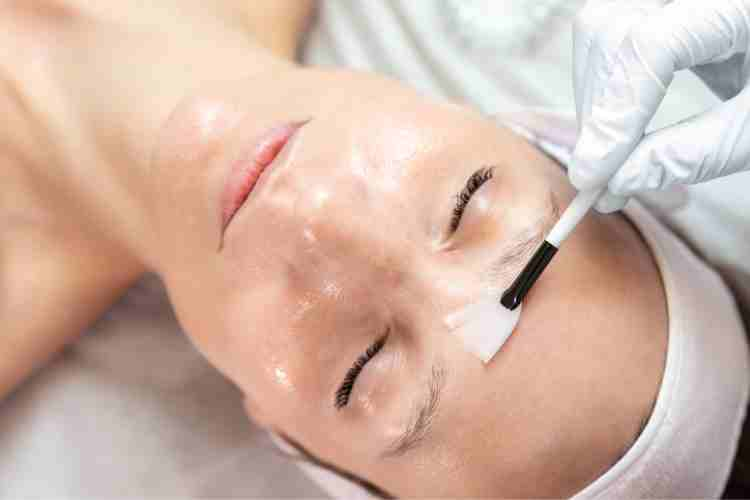Melasma is a common skin condition characterized by dark patches or discoloration on the face, particularly on the cheeks, forehead, nose, and upper lip. While melasma doesn’t pose any health risks, it can be a source of self-consciousness for many individuals. Chemical peels are a popular and effective treatment option for melasma, as they can help restore skin clarity and evenness.
Ascertain the information relating to the benefits, process, and considerations of using chemical peels to treat melasma.
Understanding Melasma
Before delving into chemical peels, it is important to have a basic understanding of melasma. Melasma is believed to be caused by a combination of factors, including hormonal fluctuations, sun exposure, and genetic predisposition. It is more common in women, especially during pregnancy or while taking hormonal medications. Melasma presents as brown or grayish-brown patches on the face, often symmetrical in appearance.
Benefits of Chemical Peels for Melasma
Chemical peels offer several benefits for treating melasma:
- Improved Skin Tone and Clarity: Chemical peels work by exfoliating the outermost layers of the skin, removing dead skin cells and promoting cell turnover. This process helps to improve skin tone and clarity, reducing the appearance of melasma.
- Reduction in Hyperpigmentation: The exfoliation and renewal stimulated by chemical peels can help reduce hyperpigmentation, including the dark patches associated with melasma. By targeting the excess pigment in the affected areas, chemical peels can help even out skin tone.
- Stimulated Collagen Production: Chemical peels can also stimulate collagen production, which improves skin texture and firmness. This can lead to an overall improvement in the appearance of the skin affected by melasma.
Types of Chemical Peels
There are different types of chemical peels that can be used to treat melasma, including:
- Superficial Peels: Superficial peels, also known as light peels, are the mildest form of chemical peels. They typically use alpha hydroxy acids (AHAs) such as glycolic acid or lactic acid. Superficial peels target the outermost layer of the skin and require little to no downtime.
- Medium Peels: Medium peels use trichloroacetic acid (TCA) in higher concentrations. These peels penetrate deeper into the skin, targeting the epidermis and upper dermis. Medium peels may require some downtime for the skin to heal and recover.
- Combination Peels: Combination peels are a blend of different acids and may include a combination of AHAs, TCA, and other ingredients. These peels can be tailored to the individual’s needs and provide more customized results.
The Chemical Peel Process
The process of receiving a chemical peel for melasma typically involves the following steps:
- Consultation: Schedule a consultation with a qualified dermatologist or skincare professional. They will assess your skin condition, discuss your medical history, and determine the most suitable type of chemical peel for your melasma.
- Preparation: Before the peel, it may be necessary to prepare your skin by using specific skincare products recommended by your provider. This can help optimize the results of the peel and minimize the risk of complications.
- Application: During the peel session, the chemical solution is applied to the face using a brush or cotton pad. The solution is left on the skin for a predetermined amount of time, depending on the type and strength of the peel.
- Sensation: You may experience a tingling or stinging sensation during the peel application. However, this is temporary and can be alleviated with the use of a fan or cool air.
- Neutralization: Once the desired time has elapsed, the provider will neutralize the peel by applying a specific solution to stop the chemical reaction on the skin.
- Post-Treatment Care: After the peel, your provider will provide instructions on how to care for your skin during the recovery period. This may include avoiding sun exposure, using gentle cleansers and moisturizers, and wearing sunscreen.
Considerations and Side Effects
While chemical peels are generally safe, there are a few considerations and potential side effects to be aware of:
- Downtime: Depending on the depth of the peel, there may be some downtime involved, especially with medium or deep peels. It’s essential to plan accordingly and allow your skin to heal properly.
- Sensitivity and Redness: After a chemical peel, your skin may appear red, and there may be some sensitivity. This is a normal part of the healing process and should resolve within a few days to a week.
- Sun Protection: Sun protection is crucial following a chemical peel for melasma. Protect your skin from harmful UV rays by wearing sunscreen with a high SPF, avoiding direct sun exposure, and using protective clothing and accessories.
- Multiple Sessions: In some cases, multiple chemical peel sessions may be required to achieve optimal results. Your provider will guide you on the recommended treatment plan based on the severity of your melasma and your skin’s response to the peels.
Conclusion
Chemical peels offer an effective solution for addressing melasma and restoring skin clarity and evenness. By exfoliating the skin and promoting cell turnover, chemical peels can help reduce hyperpigmentation and improve skin tone. Whether you opt for a superficial peel, medium peel, or combination peel, it’s essential to consult with a qualified skincare professional to determine the best approach for your specific needs. With proper care and adherence to post-treatment instructions, chemical peels can help you achieve a more even and radiant complexion, boosting your confidence and restoring a youthful appearance.

